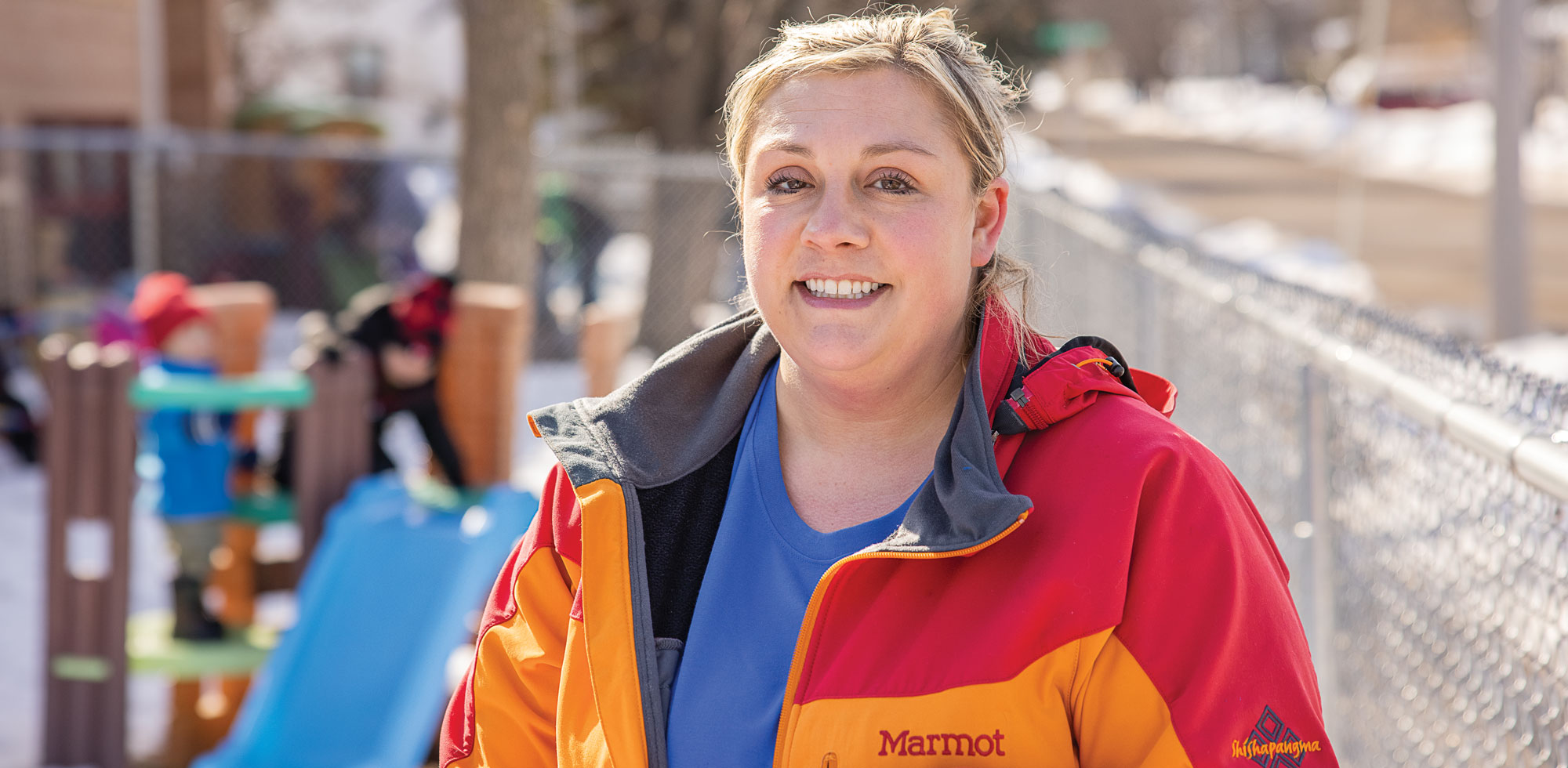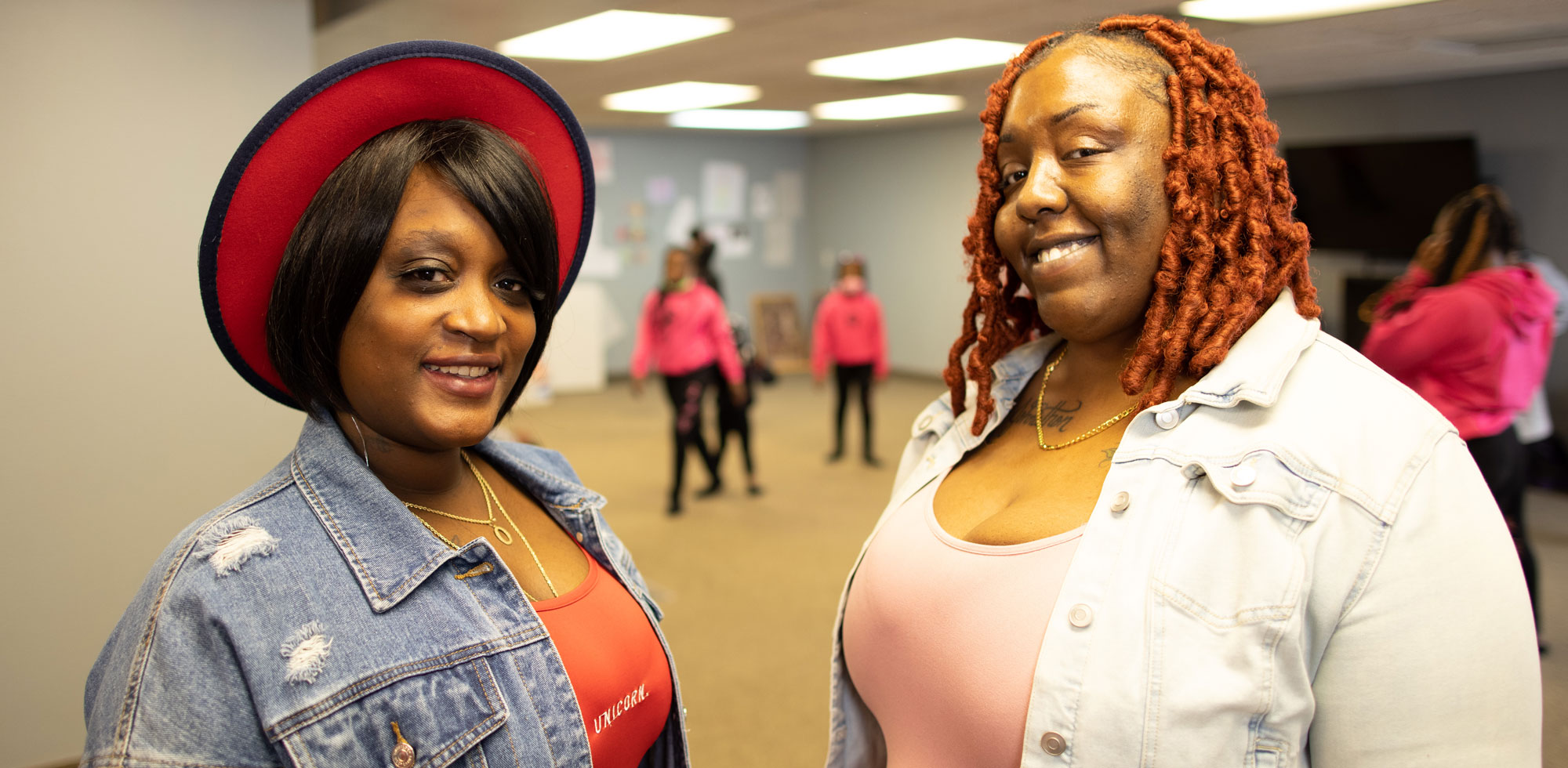
Making Sure the Kids Are Alright
COVID-19 has been particularly hard on young children. That’s why a new round of grants supports childcare operations and their essential workers.
By Andy Steiner | Photography by John Linn
When COVID-19 hit Greater Minnesota, flexibility was key to local child care providers’ very survival. School shutdowns, rigorous health regulations and parent job loss forced child care managers to think on their feet. With a commitment to providing high-quality care for the region’s youngest residents, many child care operators scrambled to adjust their offerings to meet families’ shifting needs.
It wasn’t always easy. The pandemic took an emotional—and an economic—toll on local providers, said Don Hickman, Initiative Foundation vice president for community and workforce development. “Some child care providers shut down,” he said, noting that Central Minnesota has the greatest need for child care slots—more than 15,000—among all Greater Minnesota regions. “Surviving providers have had to quickly figure out how to support distance learning for kids while their parents were at work. A system that was already stressed has been asked to do even more than ever before.”
During spring 2020, the Foundation awarded a series of grants to local child care providers who were desperately in need of financial support to continue their operations. At the beginning of 2021, the Minnesota Department of Education and the Governor’s Emergency Education Relief Fund distributed an additional $416,000 to each of the state’s six Minnesota Initiative Foundations to award programs serving vulnerable children from birth to age 8. “This granting cycle recognizes that COVID-19 has been particularly hard on young children,” Hickman said.
The Foundation’s grant awards delivered support to areas of concentrated poverty with a focus on ethnic minorities with limited English skills and rural communities that lack access to basic early childhood educational services. In March 2021, the Foundation was awarded another $250,000 to continue this work.
Even as the pandemic abates, providers will continue to need assistance to purchase sanitation and hygiene products, to invest in technology to support distance learning, and to provide food for kids who would otherwise likely go home hungry. “The need is still there,” said Hickman. “And we’re focused on providing support.”
These three providers are just a few examples of community-based caregivers that are doing great work in exceptionally challenging times.

“We had to make it work.”
St. Mary’s Early Learning Academy, Pine City
There were times when running a child care center during the pandemic felt overwhelming, but Lynsey Barnes, director of St. Mary’s Early Learning Academy in Pine City, knew she had to keep her doors open—no matter what.
Barnes felt like she didn’t have an option: They were one of two providers in Pine City. “We did have quite a few essential workers among our families,” she said. “They relied on us. I felt like closing wasn’t an option. We had to make it work.”
Making it work meant enhancing cleaning procedures, offering reduced payment options or flexible schedules for families, and, when area schools returned to all-distance learning in November 2020, helping older kids do their schoolwork online.
“We have infants through school-age kids here,” Barnes said. “When the schools were closed, parents needed care for their older kids. We told them that we’d help them do their online school, so the parents didn’t have to do that after a long day at work.”
To make this new plan work, Barnes and her staff scrambled to find enough computers for all of their school-age charges. They pulled computers from classrooms and from their offices. And because they didn’t want to put an extra burden on already-stretched parents, they didn’t raise their rates, even though they had to hire extra staff to make their plan work.
When area schools returned to in-person learning, Barnes needed to be flexible once again. Because St. Mary’s $12,000 grant from the Initiative Foundation was designated for distance learning, she worried that having kids back in school would mean she’d have to return the funds. Given the uncertainty of the pandemic, Hickman told her to hold on to the money. “We have no idea what’s going to happen in the next few months,” he said. If they need to reallocate the funds to support summer programming and food access, Hickman assured Barnes that the grant to St. Mary’s would still fit the state’s guidelines.
That assurance helped Barnes feel confident that St. Mary’s can remain open—no matter what the future may hold. Her program is an important community asset, and she wants to be able to be there for families well into the future.
“Life keeps changing,” Barnes said. “Our parents were so happy that they could rely on us … that we did stay open.”
“I didn’t want to take anything away from families.”
CAMBRIDGE-ISANTI PUBLIC SCHOOLS
Before the pandemic hit her community, Kim Goodmanson, early childhood and family programs coordinator for Cambridge-Isanti Public Schools, couldn’t imagine how she and her colleagues could take their preschool and early childhood family education programs online.
When the school district informed her that distance-learning would be imminent, Goodmanson knew she had to make it work.
“We felt it was extremely important to continue our relationship with our families,” she said. “From March 13 (2020) on, we were not in-person anymore. It was like a bucket of ice-cold water on everyone’s heads.”
Goodmanson and her staff found their resolve and scheduled a series of virtual planning meetings to devise ways to do what only a few days before had felt undoable.
“We pivoted quickly into distance learning, which is really tough,” she said. “Distance learning is not even a thing for preschool: We focus on social and emotional development and relationships. To transition that online was really tough, but our teachers were amazing.”
Staff created packets for preschool families, which discussed the weekly themes. Students were invited to attend class online. Packets could be downloaded at home, but (masked) parents also had the option of bringing their children to the district office to pick them up. “Seeing them was the highlight of our week,” Goodmanson said.
While the virtual option they offered was strong—and well-attended by children and families— early childhood staff realized it was a sorry substitute for in-person learning. They lowered tuition costs for families, even though they knew the move would cause serious financial problems.
“We felt like we couldn’t continue to charge families full tuition when they couldn’t come to school,” Goodmanson said. Tuition fees cover the costs of the program, including staff salaries, but they saw no other option: “I kept looking for ways to make the budget work because I didn’t want to take anything away from families.”
The hit was real, with tuition fees down $60,000 in spring 2020 and $29,500 in the fall.
When Goodmanson got an email about an Initiative Foundation grant opportunity, she applied to help make up for the loss of tuition-based income. “We want to keep offering our families this support and education and programming, even when they can’t pay their tuition or it is very reduced.”
The $15,000 Initiative Foundation grant they received helped make up the budget shortfall. “The grant helped support us so we could keep offering our program,” Goodmanson said. And in mid-January, when programming went back to in-person, the virtual classes helped make the transition easier for her young learners.
“It did feel like the first day of school again,” she said. “But there was a whole lot less first-day anxiety because the kids had maintained that virtual connection with their teachers. They were so excited to come back, and we were so excited to see their faces.”

“We switched it up to cater to the needs of the community.”
TOO MUCH TALENT, ST. CLOUD
From its founding in 2015, the staff at Too Much Talent in St. Cloud has taken a creative and innovative approach to caring for kids.
The program, which focuses on the needs of the city’s African and African American communities, is led by sisters Lenora Hunt and Nita Jones and has always offered a range of after-school options for youth between the ages of 4-17. But when COVID-19 forced St. Cloud schools to move into distance-learning, the pair decided to further expand their options to meet the pressing needs of families.
Kids needed a place to go, Hunt and Jones decided, and parents needed someone to support their children during the school day when they were at work. So Too Much Talent made a big pivot. “From 8 a.m. to 3 p.m., we offer distance learning for kids of all ages,” said Hunt, who is the center’s program director. Too Much Talent’s popular after-school options remain, including Boys2Men, a support program for boys that teaches etiquette and job training. The center also has an arts program called Kool-Aid and Paint, and a dance program for girls and boys called Bratz.
Another popular option is The Hub, a program that began as a place for youth to meet. Since the pandemic, The Hub’s focus has expanded: Now it’s more focused on combating isolation, promoting social distancing, practicing health and safety and returning back to the classroom, according to Jones, the center’s program coordinator. “We have a heavy emphasis on the social impact of COVID-19 and hybrid and distance learning,” she said.
The Hub group meets biweekly during the school day. “What we’ve noticed running the center is that there are gaps in between online classes,” Jones said. “So usually meetings are held between those gaps.”
The sisters applied for and were awarded a $1,000 Initiative Foundation grant to support Hub programming, including funding supplies needed to fill special COVID-19 packets (with hand sanitizers and face masks) assembled by youths and handed out to Too Much Talent kids and families.
Jones and Hunt were happy to be awarded the grant, especially since all their pandemic-inspired program expansion has been hard on the organization’s finances.
“We are thinking about hosting a fundraiser just to help keep things afloat,” she said. Belt-tightening aside, they are happy with the changes they made: “It was a good decision. We switched it up to cater to the needs of the community.”